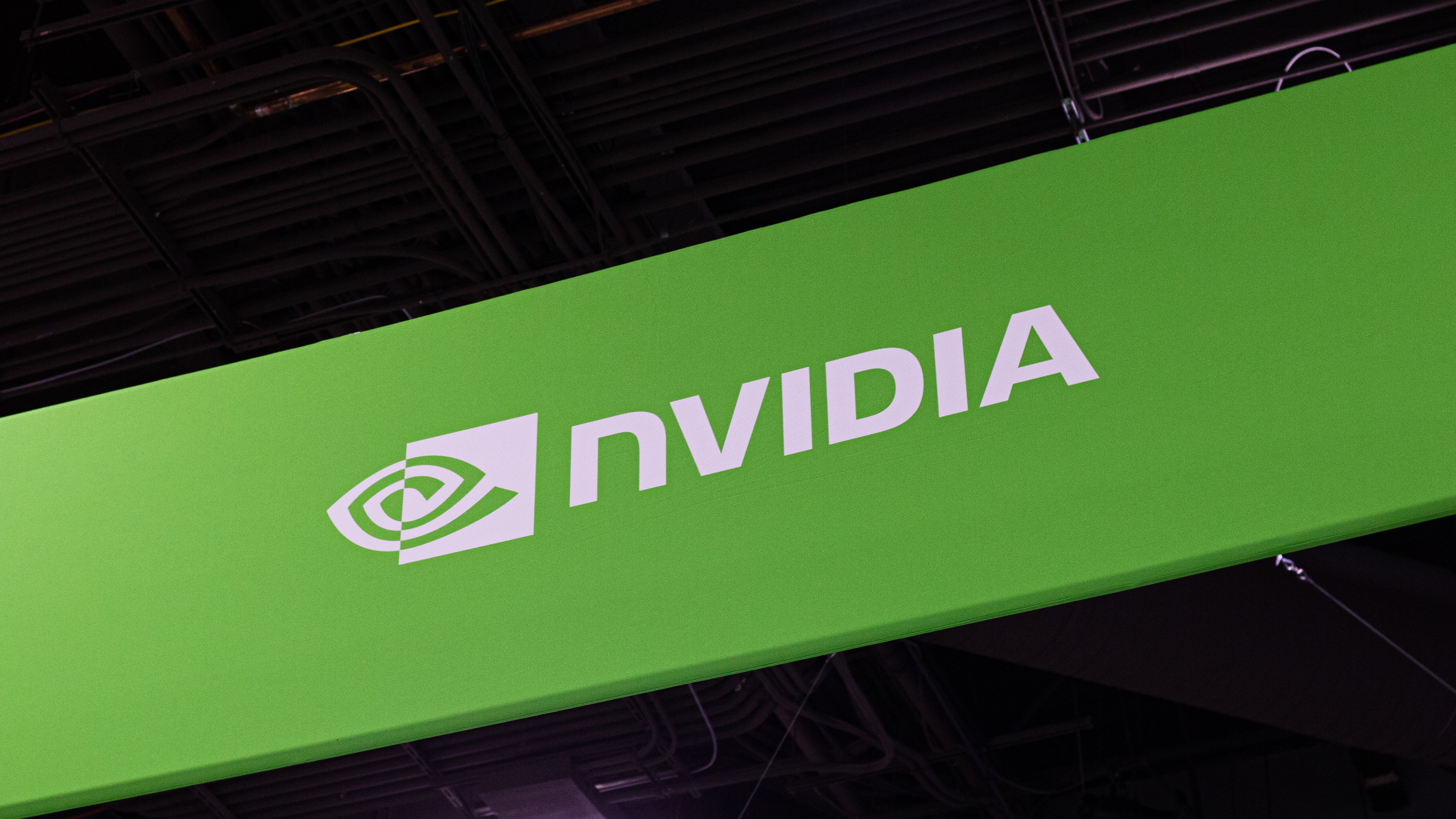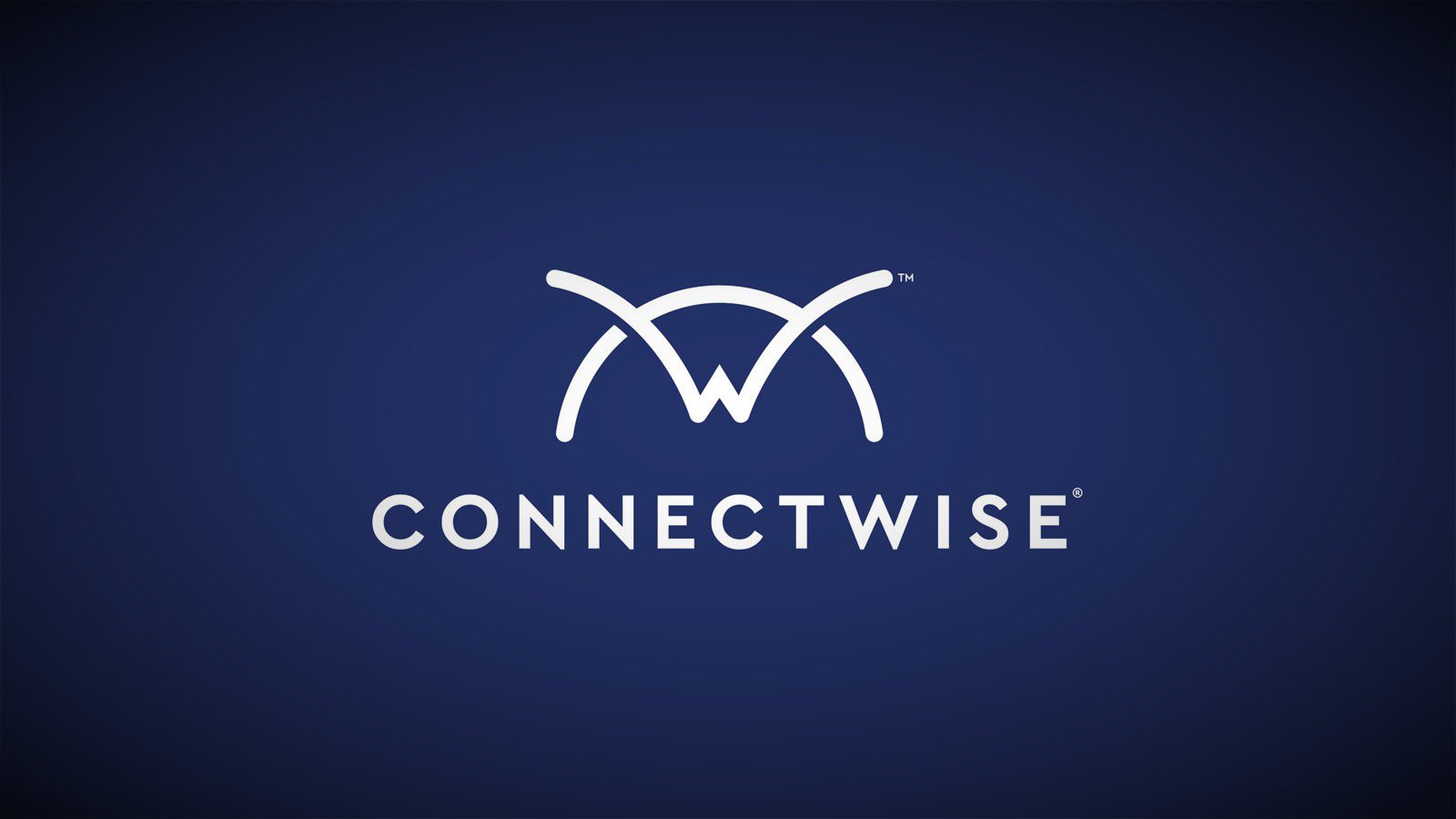The 5 Best Retail POS Systems for 2024
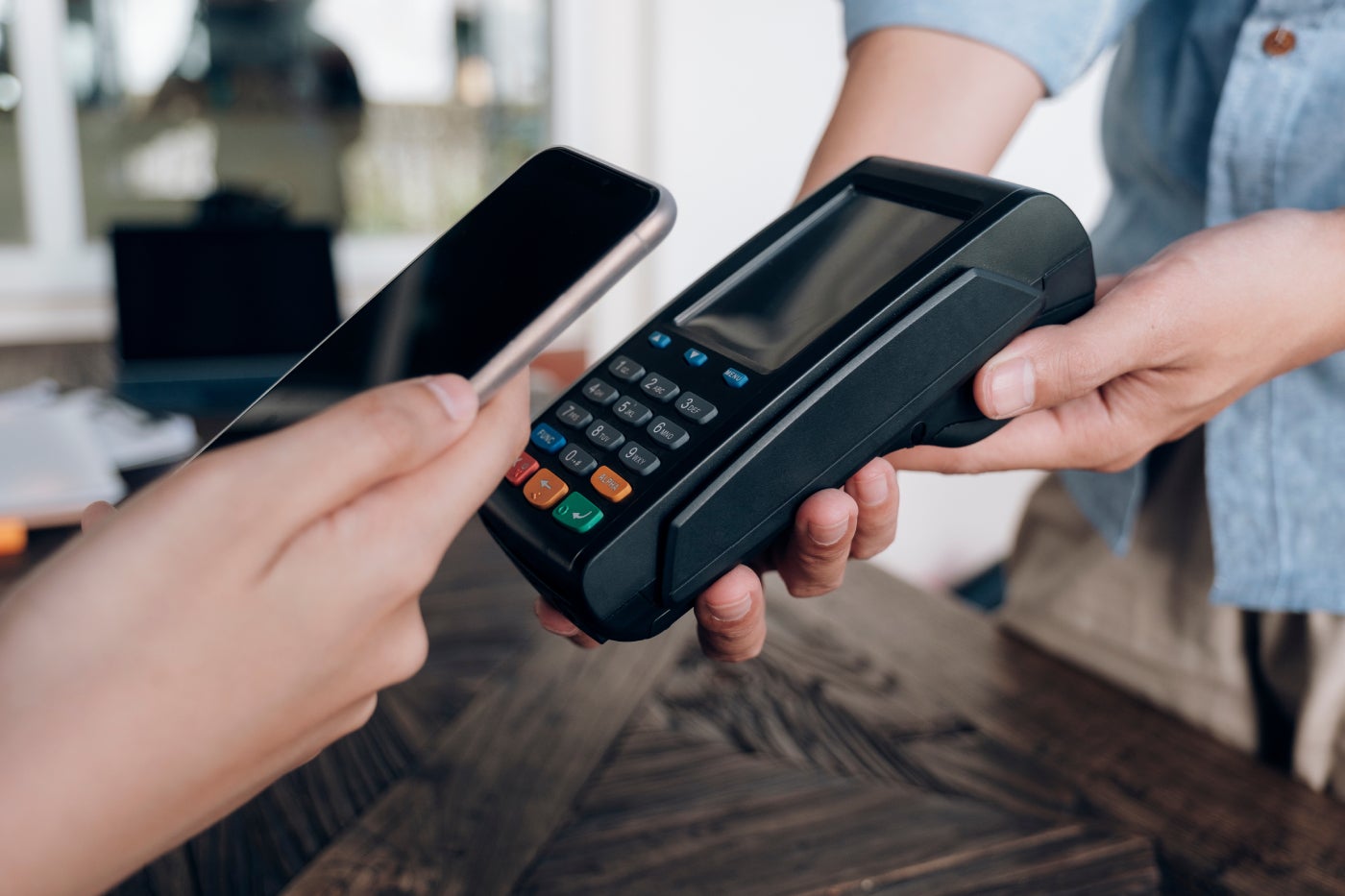
Retail businesses need a POS system that goes beyond ringing up sales and accepting payments. A good POS system has robust inventory management tools, omnichannel sales, streamlined customer relationship management (CRM) features, employee management, and reports that help in business decisions.
Top retail POS comparison
Alongside pricing, there are some important features that set apart the best retail POS software on the market. The table below illustrates which of the top five retail POS systems include these key features.
| Our rating (out of 5) | Starting price | Processing fee* | Mobility** | Cloud-based | |
|---|---|---|---|---|---|
| Square for Retail | 4.66 | $0 | 2.5%–2.6% + $0.10 | Yes | Yes |
| Shopify POS | 4.48 | $5 | 2.4%–2.7% + $0.10 | Yes | Yes |
| Hike POS | 4.28 | $69 | Varies | Yes | Yes |
| Clover | 4.14 | $14.95 | Varies | Yes | Yes |
| Lightspeed Retail | 4.08 | $89 | 2.6% + $0.10 | Yes | Yes |
| * For card-present transactions ** Mobile apps and readers for selling across the sales floor, events, curbside, etc. |
|||||
Square for Retail: Best overall
Our rating: 4.66 out of 5
Square for Retail is specialty POS software from Square’s large ecosystem of POS solutions. Similar to all of Square’s free options, the Square for Retail entry plan includes all the features you need to run a retail business. Square can fully support small industries such as startups and small businesses as well as larger multi-location and omnichannel businesses.
Why I chose Square for Retail
Square for Retail is the only POS out of the dozens I have evaluated that gives you all that you need to accept payments in-person and online, manage inventory and employees, and build an e-commerce store for free.
What’s even better is that Square for Retail has plans catered to your business as it grows, too. And if you are ready for more specialty features, you can easily get Square’s add-ons for tools like loyalty programs, invoicing, team management, and more.
Pricing
Square for Retail has three subscription plans:
- Free: $0; basic inventory tools, online store, cross-location order management.
- Plus: $89/month per location; free features along with advanced inventory and reporting tools.
- Premium: Custom pricing; Plus plan features and advanced employee and customer management functionalities
*There is a free 30-day trial on the Plus plan.
Square POS is locked in with Square Payments as a payment processor. Here are its fees:
- In-person: 2.5%–2.6% + $0.10
- Online: 2.9% + $0.30
- Manual entry: 3.5% + $0.15
- Afterpay: 6% + $0.30
Custom rates are available if you process more than $250,000 annually.
Square hardware options:
- Square Kiosk: $149
- Square Terminal: $299
- Square Register: $799
Features
- Customizable checkout screen with hotkeys.
- Customer profiles.
- Inventory management such as multi-location tracking, low stock alerts, and inventory counts.
- Free e-commerce site builder (Square Online).
- Mobile POS apps (iOS and Android).
- Tap-to-pay feature in the mobile app.
- Employee management functionalities like shift scheduling and swapping, custom permission settings, and activity logs (on Plus plan).
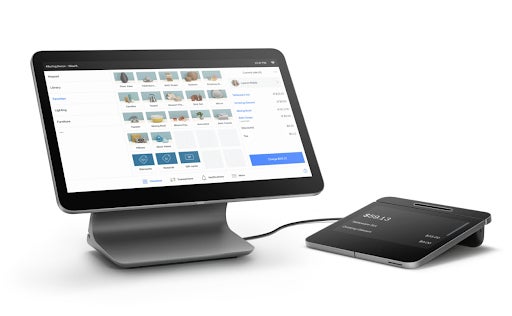
Pros and cons
| Pros | Cons |
|---|---|
|
|
Shopify POS: Best for omnichannel sales
Our rating: 4.48 out of 5

Shopify POS is an excellent choice for retailers that either already use Shopify for their e-commerce stores or are looking to sell online and in person. You can choose either the standalone Shopify POS, which comes with a very basic online store, or leverage Shopify’s e-commerce solution with Shopify POS for a seamless and powerful omnichannel setup.
Why I chose Shopify POS
Shopify is widely known for its best-in-class e-commerce platform and is primarily known for online selling. However, Shopify POS is equally impressive. I like its customizable checkout interface, its newest hardware options (POS Go, an all-in-one mobile POS, and barcode scanner), and, most importantly, its comprehensive omnichannel selling features.
Curbside pickup, ship from store, returns, and multi-location inventory tracking are all effortless, thanks to the integration of Shopify POS with the Shopify e-commerce platform.
Pricing
Shopify POS offers two subscriptions:
- Starter: $5/month; 1 POS Lite location included.
- Retail: $89/month; 1 POS Pro location included.
Shopify also offers e-commerce plans that include the POS Lite for free. Add a POS Pro for $89 per month per location.
- Shopify Starter: $5/month.
- Basic: $39/month.
- Shopify: $105/month.
- Advanced: $399/month.
*Shopify offers a three-day free trial plus the first month for $1 across all plans.
Shopify’s payment processing fees vary based on the plan:
- In-person: 2.4%–2.7% + $0.10
- Online: 2.4% + 30 cents–2.9% + $0.30
Shopify POS hardware options:
- Tap & Chip Card Reader: $49
- POS Go: $299
- Shopify POS Terminal: $349
- Countertop Kit: $459
Features
- Mobile app support for tap-to-pay.
- Omnichannel sales — browse in-store, buy online; buy online, pickup in-store (BOPIS); accept returns in-store for online purchases; ship from store — all seamlessly syncing.
- Sell on social media, marketplaces, and wholesale marketplaces.
- Employee management, track individual performances, and access permissions.
- Robust marketing tools such as lead generation, email marketing, and product reviews.
- Thousands of available integrations from the Shopify App Store.
- Customer profiles with customer loyalty reports and patterns (on Pro plan).
- In-depth retail analytics (on Pro plan).
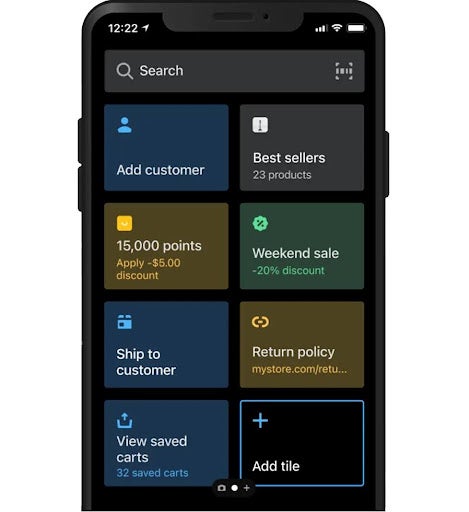
Pros and cons
| Pros | Cons |
|---|---|
|
|
Hike POS: Best for mobile sales and inventory
Our rating: 4.13 out of 5

Hike POS offers excellent inventory and order management features, customized reports, and employee management tools that can easily rival popular retail POS solutions. It also gives you flexibility over which payment processor you can use for your business.
Why I chose Hike POS
Hike comes with a mobile app that is highly rated by real-world users, making it an ideal choice for sales at mobile events if you don’t have hardware. I also like that it has its own free inventory scanner app you can use for stock inventory.
While you need to upgrade your Hike subscription to unlock online sales, I’m still impressed that Hike doesn’t charge any transaction fees for going with your preferred payment providers, unlike Shopify, which charges nearly 2%, and Square, which is exclusive to Square Payments.
Pricing
- Essential: $59/month billed annually or $69/month billed monthly, based on one location and register.
- Plus: $99/month billed annually or $119/month billed monthly, based on one location and register.
- Enterprise: Custom-quote.
Features
- Barcode scanning, product search, and quick tap functions for checkout.
- Customer profiles with behavior insights.
- Built-in loyalty program.
- Inventory features such as real-time tracking, low-stock alerts, barcoding, purchase orders, and vendor management.
- Mobile app on iOS and Android.
- Multi-location inventory and reporting.
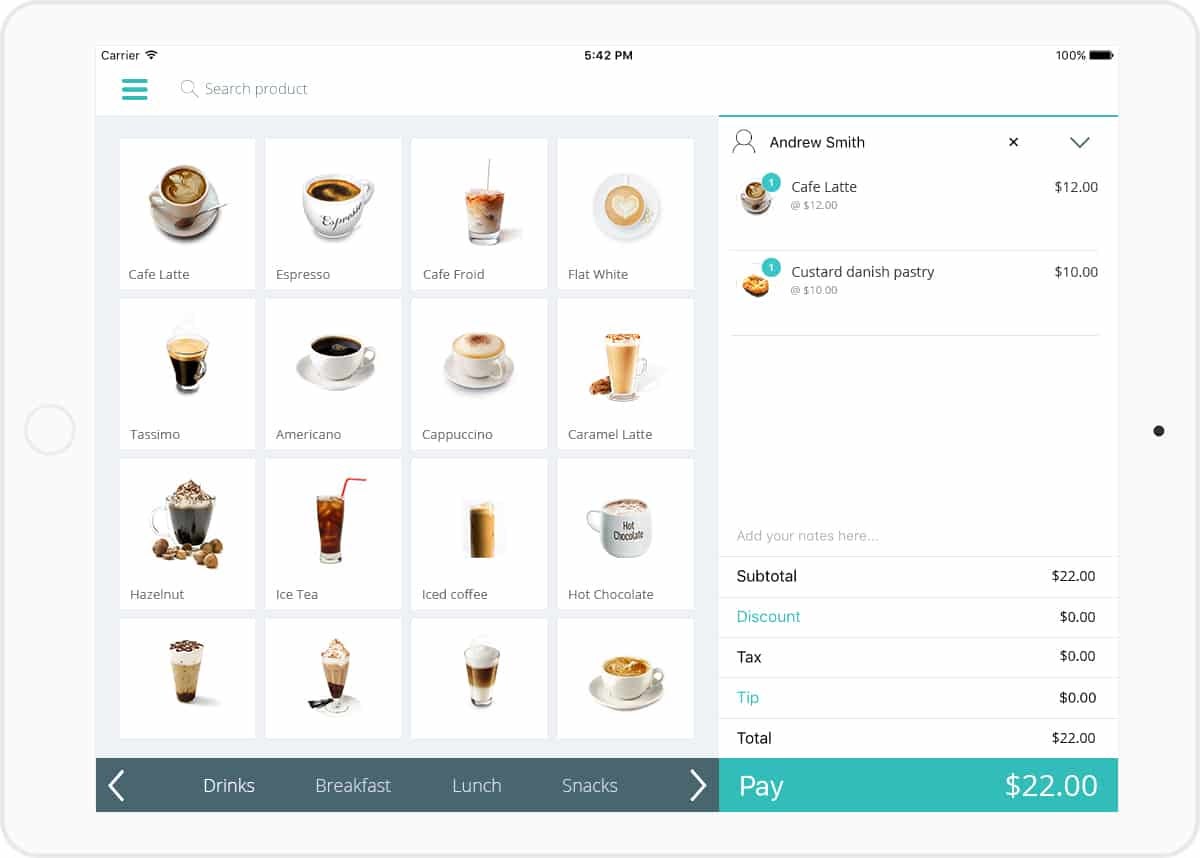
Pros and cons
| Pros | Cons |
|---|---|
|
|
Clover: Best for choice of payment processor
Our rating: 4.14 out of 5

Clover is a cloud POS system owned by the payment network Fiserv. Any merchant services provider operating on the Fiserv network can sell the Clover POS with its merchant services software built in. This allows you to choose your preferred payment provider and still go with Clover’s POS and its proprietary hardware.
Why I chose Clover
Clover bundles its hardware and software to give you a retail-specific POS system. You can buy the system straight from Clover or through any of the merchant providers in the Fiserv network. Its industry-grade POS hardware is designed to be light, mobile, and communicate via cellular LTE signals or WiFi.
Pricing
Clover has three subscription plans:
- Starter: $14.95/month.
- Standard: $49.95/month.
- Advanced: $69.90/month.
*Software fees are the same throughout the locations where Clover is purchased.
Transaction fees:
- Card-present: 2.3%–2.6% + $0.10
- Manual entry: 3.5% + $0.10
*The above-mentioned fees are reflected on Clover’s website as of this writing, but fees will vary based on where you purchase your Clover POS hardware.
Features
- Automated product tracking, stock level adjustments for returns and exchanges, and location transfers.
- Ability to accept Venmo, scan-to-pay, store credit, lay-away, gift card, and buy-now-pay-later (BNPL) payments.
- Ability to attach photos of customers to their profiles, solicit feedback on receipts, and reply directly through the POS.
- Loyalty program features.
- Receive rapid deposits (additional 1.5% processing fee) — get money within minutes of a credit card sale.
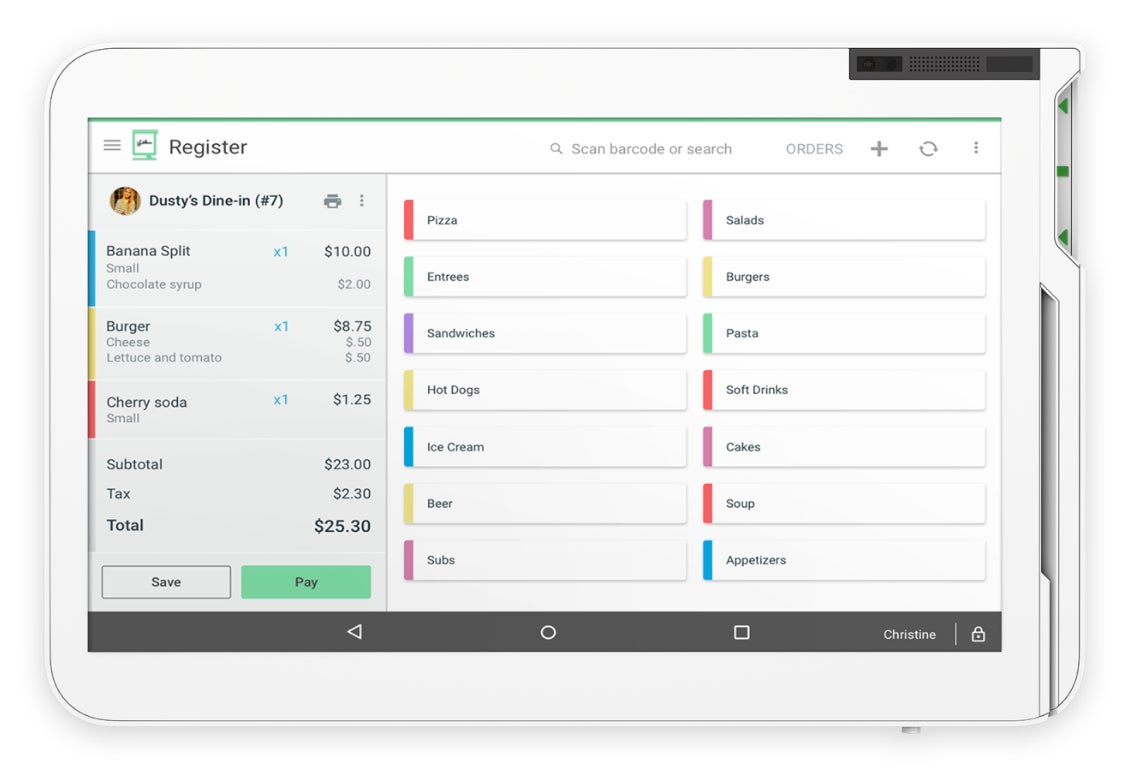
Pros and cons
| Pros | Cons |
|---|---|
|
|
Lightspeed Retail: Best for complex inventory management
Our rating: 4.08 out of 5

Lightspeed Retail is one of the best retail POS systems because of its sophisticated and top-of-the-line inventory tools and in-depth analytic reports. It has more than 40 sales and inventory reports, with built-in e-commerce and loyalty programs.
Why I chose Lightspeed Retail
Lightspeed Retail allows retailers to manage purchase orders with a built-in catalog and create product bundles and multiple variants. Its inventory tool has a forecasting tool that helps anticipate inventory needs and predict shopping trends, which is what I like about the software. Its reports come with actionable insights that help you make decisions about your business.
Pricing
Lightspeed Retail gives you three subscription options:
- Basic: $89/month billed annually or $109/month billed monthly, based on one location and register.
- Core: $149/month billed annually or $179/month billed monthly, based on one location and register.
- Plus: $239/month billed annually or $289/month billed monthly, based on one location and register.
Payment processing fees:
- Card-present fees: 2.6% + $0.10
- Manual entry: 2.6% + $0.30
Features
- Built-in purchase ordering and tracking functions, special orders, and forecasting tool to predict shopping trends and anticipate inventory needs.
- Supplier directory and built-in product catalog.
- Customer profiles.
- Built-in reports that cover inventory, sales, employee performance, and more — with actionable business tips.
- Automated loyalty program (available in Core and Plus plans).
- In-house e-commerce platform (available in Core and Plus plans).
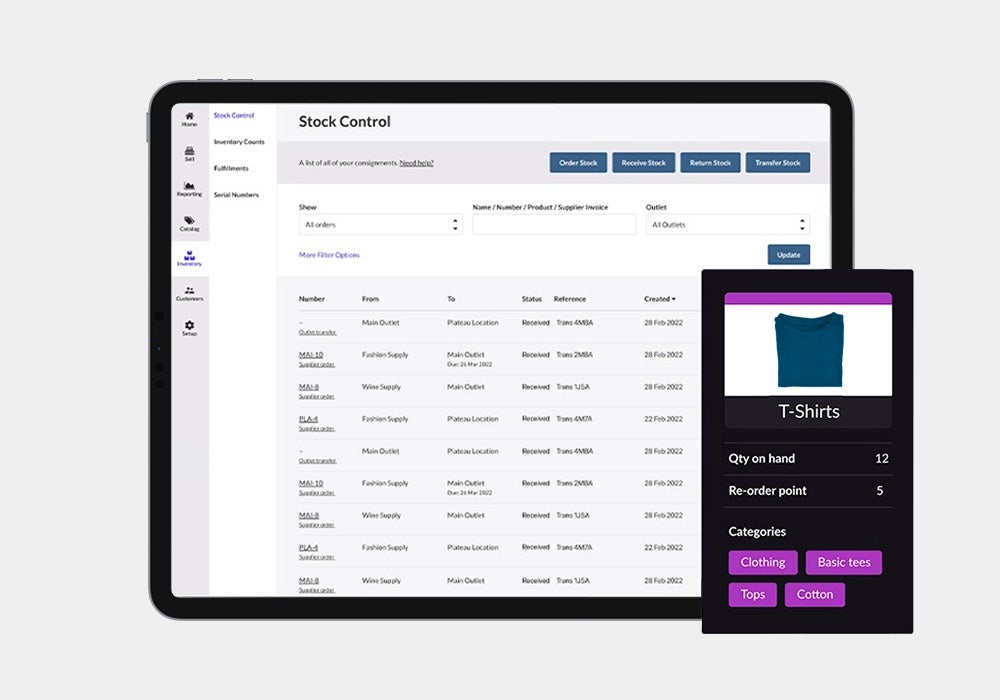
Pros and cons
| Pros | Cons |
|---|---|
|
|
How do I choose the best retail POS for my business?
A retail POS system is the central hub for your retail business. It doesn’t just process sales and accept payments. Look for a retail POS system that can help manage inventory, oversee employees, and help build a customer base with loyalty and marketing efforts. Consider also one that can collect data to gather reports that help you in purchasing and staffing decisions.
Methodology
I evaluated dozens of point-of-sale systems and scored them using our in-house rubric of 20 data points with the following categories — pricing, software features, hardware, installation and security, and user reviews. I prioritized POS systems that are based in the cloud but offer offline mode (hybrid), are reliable, easy to use, and provide features that support business growth.
This article and methodology were reviewed by our retail expert, Meaghan Brophy.
Source link





